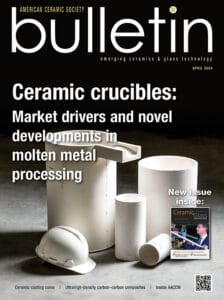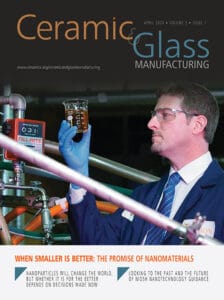Thermoelectric power generation relies on a thermally induced electrical current in an all-solid-state device. In principle, the same kind of device can be used to electrically induce a thermal current and thus enable coolers or heaters. In both operational modes, the useful power and the power conversion efficiency depend on transport of charge carriers (electrons or holes) and propagation of lattice vibrations (phonons) in the thermoelectric materials involved. Broader applications of thermoelectric devices can be expected if new materials can be developed and assembled to meet the requirements reliably under a number of environments and duty loads. Deeper insight into mechanisms by novel theoretical concepts and advanced manufacturing methods is needed to realize unique thermoelectric as well as thermionic materials and devices, which exhibit far greater figure of merit and higher power factor than those of currently available counterparts. Computational sciences also afford researchers tools and methods to guide in the design, performance and evaluation of non-traditional thermoelectric and thermionic materials and devices.
The focus of this symposium is to convene leading global field experts to engage in ceramic technology-centered dialogues to address critical issues in the development of thermoelectric and thermionic energy conversion devices. Researchers/scientists in thermoelectrics and related fields are invited to participate in this symposium.
Proposed Session Topics:
- Novel thermoelectric and thermionic materials with high power factor and/or high figure of merit
- Inorganic thermoelectric materials, organic thermoelectric materials and organic-inorganic hybrid systems
- Electronic and phononic band structure engineering, nanostructural engineering, superlattice structures and 2D thermoelectric materials
- Porous thermoelectric materials
- Thermal stability and mechanical properties of thermoelectric materials and reliability of devices
- Electrical and thermal contact resistivity and their interplay with joining of thermoelectric materials
- Thermodynamics and solid-state defect chemistry of thermoelectric materials
- Theoretical and experimental approaches to thermal and electrical transport mechanisms in thermoelectric and thermionic materials
- Design new thermoelectric and thermionic materials using density functional theory or other first principles computational methods
- Innovative processing routes for thermoelectric and thermionic materials
- Advanced manufacturing technologies for thermoelectric devices and modules
- Flexible thermoelectric materials and devices
- Miniaturized and integrated thermoelectric and thermionic devices
- System-level applications of advanced thermoelectric devices and modules in electrical power generation (i.e. thermogenerators), sensor technology, heating and cooling
Symposium Organizers
- Michitaka Ohtaki, Kyushu University, Japan
- Kyu Hyoung Lee, Yonsei University, Republic of Korea
- Armin Feldhoff, Leibniz University Hannover, Germany
- Sunmi Shin, National University of Singapore, Singapore
- Mari-Ann Einarsrud, Norwegian University of Science and Technology, Norway
- Peng Jiang, Dalian Institute of Chemical Physics, China
- Theodora Kyratsi, University of Cyprus, Cyprus
- Takao Mori, National Institute for Materials Science, Japan
- Amin Nozariasbmarz, Pennsylvania State University, USA
- Daryoosh Vashaee, North Carolina State University, USA
Points of Contact
- Michitaka Ohtaki: ohtaki@kyudai.jp
- Kyu Hyoung Lee: khlee2018@yonsei.ac.kr
- Armin Feldhoff: armin.feldhoff@pci.uni-hannover.de
- Sunmi Shin: mpeshin@nus.edu.sg
Subscribe to Ceramic Tech Today

Don’t miss the latest ceramic and glass materials news. Receive the CTT newsletter to your email three times a week by subscribing at this link.
Subscribe to Ceramic & Glass Manufacturing Weekly

Don’t miss the latest ceramic and glass business news. Receive the C&GM Weekly newsletter to your email every Monday by subscribing at this link.


